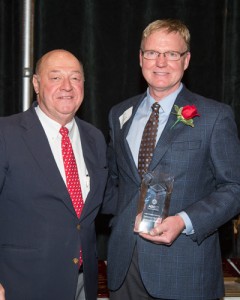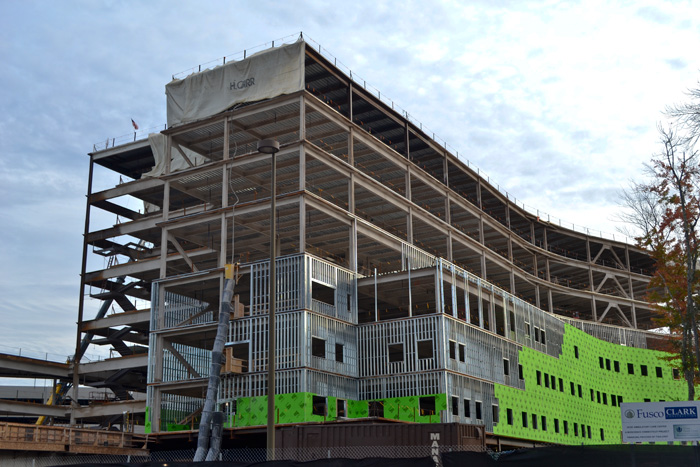
The building activity on the UConn Health Center campus is part of the rebuilding of Connecticut’s economy.
Bioscience Connecticut, the collection of mostly state-backed construction projects with the long-term vision of making Connecticut a worldwide destination for bioscience research and health care, is credited with creating more than 1,000 construction jobs since breaking ground 16 months ago. More than 80 percent of the contracts associated with Bioscience Connecticut have been awarded to Connecticut companies.
“Construction work at the Health Center is creating jobs and contributing to the economic recovery of the state,” says Thomas Trutter, the UConn Health Center’s associate vice president of campus planning, design and construction.
Trutter presented Bioscience Connecticut jobs data at the Construction Institute’s annual State of the State forum last week. This year’s theme was “Public Construction’s Role in a Recovering Economy.”
- By the end of the projects, a projected 15 percent of contracts will have been awarded to businesses owned by minorities or women, or those classified as “disadvantaged.”
- The rate of veteran hiring on the hospital tower is 7 percent.
- 147 hires are attributed to the Jobs Funnel, a training program for Hartford area residents seeking work in the construction fields.
Consistent with the “Jobs Today, Economic Growth Tomorrow, Innovation for the Future” slogan associated with Bioscience Connecticut, Trutter explained how the construction jobs represent the start of the economic catalyst.
- The 30 percent increase in class sizes at the UConn Schools of Medicine and Dental Medicine means growth in faculty and graduation of more physicians and dentists.
- The new outpatient care center is expected to aid in additional recruitment of top talent.
- The Jackson Laboratory for Genomic Medicine, simultaneously under construction with Bioscience Connecticut, is expected to hire more than 300 researchers and related staff over the next decade, with a long-range expectation of more than 600.
- Additional incubator space will enable further entrepreneurial establishment and development.

“We’re building these buildings and providing jobs today, but innovation is what’s going to occur in these buildings,” Trutter says. “Between the incubator labs, genomic medicine research, our cell and developmental biology, and CCAM (Center for Cell Analysis and Modeling), what’s going to happen in theses spaces has a chance to be very life changing and society changing.”
Construction Industry Honors
Also last week, Trutter accepted the 2013 Construction Industry Recognition Award from Associated General Contractors of Connecticut, the building division of the Connecticut Construction Industries Association. The chapter presented Trutter with the award for the “Public Owner Representative of the Year.” Award criteria include leadership, understanding of construction principles and theory, record of professional and personal accomplishment, skill level, experience, judgment, and fair and responsible business practices.
Follow the UConn Health Center on Facebook, Twitter and YouTube.



